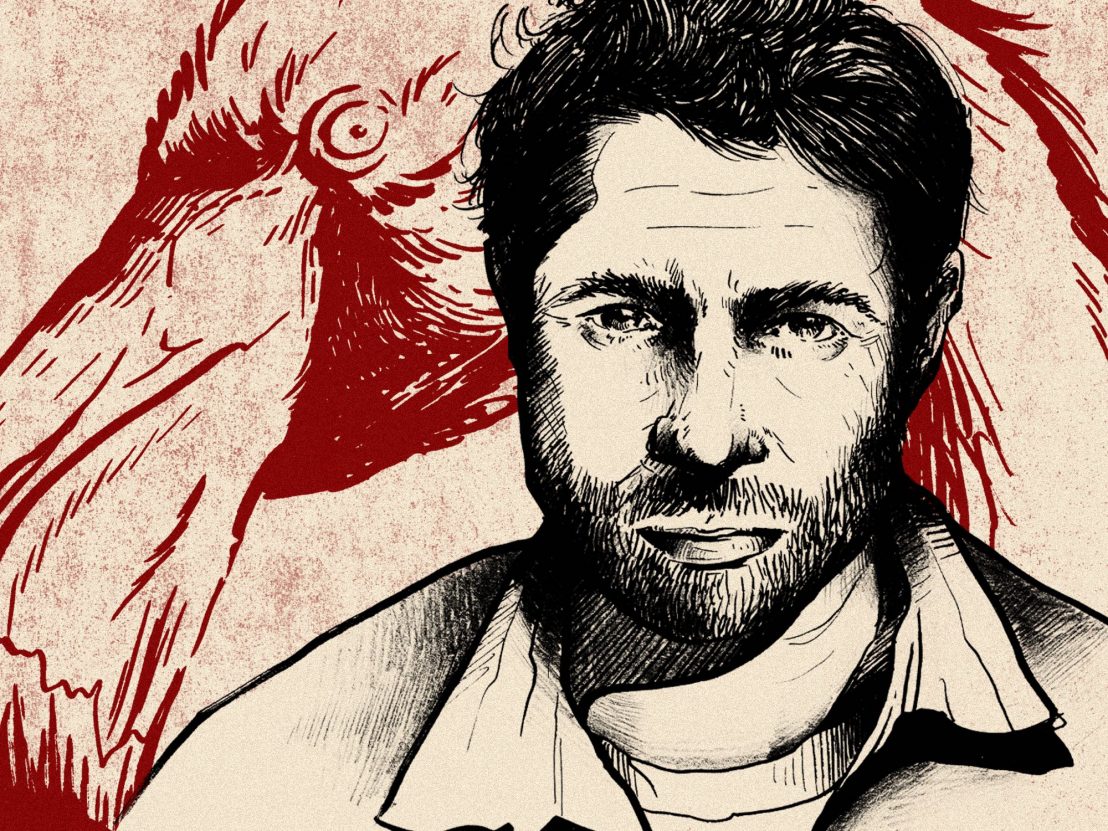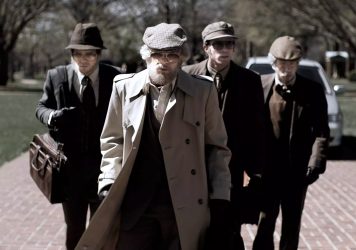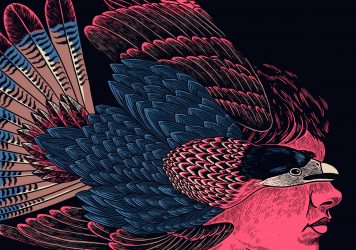
The American Animals director discusses his unconventional approach to putting true stories on screen.
American Animals is the new film from The Imposter director Bart Layton. Once again, he seeks to shove at the walls around the traditional definitions of a documentary. Telling the strange true story of four college students who tried to pull off a heist of rare books from a Kentucky university library, it combines actual interview with those now-grown guys with a more traditional fictional version of the events. To dissect this unique combination of fact and fake, we sat down with Layton ahead of the film’s release.
LWLies: Did you plan from the beginning that the film would be presented in the way it is?
Layton: It was always intended to have this unconventional mix. The Imposter had a lot of dramatic elements, but it really was a documentary in terms of the emotional and narrative drive of the story. It’s completely driven by the real people. With this, I was more interested in asking, ‘Is there another way of telling a true story that we haven’t seen before?’ It certainly isn’t a documentary, but it also isn’t straight non-fiction.
I think, more than anything, it was probably down to the process by which the film came about. I read about the story and thought it was amazing. By the time I made contact with the real guys, they were in prison, and we began this sort of pen pal relationship. It was how they talked about their motivations and who they were that made me think this was a story that was really worth telling. It’s about something which felt more relevant now than it was at the time. And because their voices were so honest and unusual, I was keen to find a way to include them in the movie.
Was the script then based on what you heard from them?
We were corresponding with the four guys, just getting more and more information over either email or in the occasional phone call, and lots of long hand-written letters. I wrote the script based on that. I included their real voices, things that they said in their letters or which I anticipated they would say, in one form or another, when we would eventually be able to sit down and shoot interviews after they got out of prison.
Of course, what happened was when they did come out of prison and we shot the non-fiction stuff, a lot of what they said was very different. Unlike with actors, you can’t just make real people deliver lines. A lot of what they’d said in their letters, either they didn’t feel comfortable saying them, or maybe they’d changed their minds. For whatever reason some of it was different, and some of it was way better.
And then we were faced with a slightly tricky situation, having had the movie financed based on the screenplay. I had to call up the producers and financiers and say, ‘I need you to give me a couple of months to go back into the script and rewrite it around what they really said, rather than what I expected them to say.’ I didn’t want anything that felt inauthentic. The last thing you want to do with your documentary subjects is turn them into actors, because then you lose the thing that they’re there to do.
So moments like when the real-life Spencer Reinhard watches the actors playing him and his friends drive by on their way to the heist – did those intersections arise originally in the script or come later?
I would say pretty much everything was incorporated in the script. That scene that you’re describing, I shot the two halves of that [the real figure and the actors] a year apart, knowing I wanted this occasional convergence between the world of reality and the world of fiction. It’s this idea that there is this sort of Ghost of Christmas Future, that he’s watching his younger self whilst he’s on the way to do this incredibly ill-advised thing which has the potential to irreversibly change the course of his life.
And what meaning do you try to wring out of these juxtapositions?
I think we’re often looking for omens which are either going to reinforce our belief that what we’re doing is right or tell us not to. And I think one of the things with Spencer – both the real one and not – is that he doesn’t really know how to read the omens. He doesn’t really know what it is he’s supposed to be doing. He’s constantly drawn to play Russian roulette with his life, to shake everything up in order to give himself a story to tell – to find a voice, have an identity, become an artist. I think he’s torn between the desire to have that and the desire not to destroy his family and his future by doing this quite self-destructive thing.
How do you view the relationship between the documentary and fiction elements in the film? Do you think of the reconstructed scenes as flashbacks, or the real interviews as glimpses of the future?
I have a slight issue with the word ‘reconstruction’ or ‘reenactment’ or whatever. I’m not sure that you would describe Jackie or Molly’s Game or I, Tonya as reconstruction. As soon as you put real voices in the movie, does that make all of the drama a reenactment or reconstruction? It’s still based on a true story, like countless other movies. And we don’t describe them that way.
For me, this is a drama very, very closely tied to the truth. And the intention with this is to find a new way of telling this story where you’re constantly reminded that it’s real. These people are real, the decisions that they’re making are real, and the consequences are going to be real. And so the intention is that you have a greater degree of emotional investment in the story and connection to the characters. Rather than there being a ‘Real Spencer’ and a ‘Fictional Spencer’, it was more like an older Spencer and younger Spencer. We’re very familiar with movies where you have the older character as a kind of framing device.
I wanted the audience to think about it in those terms. You get this added level of veracity and emotional investment because you’re not being told to suspend disbelief and go into a movie world where we know that we’re safe because the consequences don’t really affect us. With this, the events are always operating in the same world that you and I inhabit. And so we’re constantly asking ourselves, ‘Where is this going to go? How far is it? How far are they going to take it?’ Because we play along in a slightly different way because we are closer to being able to experience it through them, having removed that layer of ‘movie veneer‘.
American Animals is released 7 September. Read the LWLies review.
Published 8 Sep 2018

Documentarian Bart Layton blurs the line between fact and fiction in his compelling heist drama.

The Irish rising star talks American Animals, shoplifting and how playing a certain type of character can lead to having weird dreams on set.

Acclaimed documentary maker Errol Morris seeks answers from Trump’s former fire fighter-in-chief, Steve Bannon.